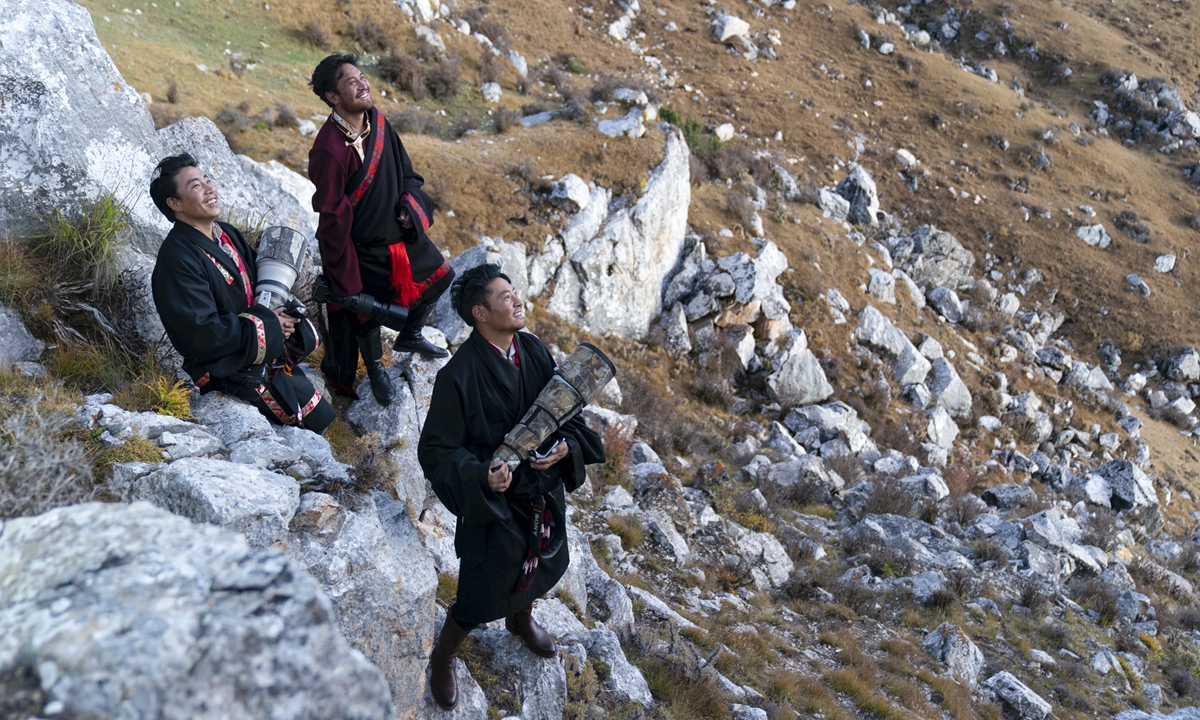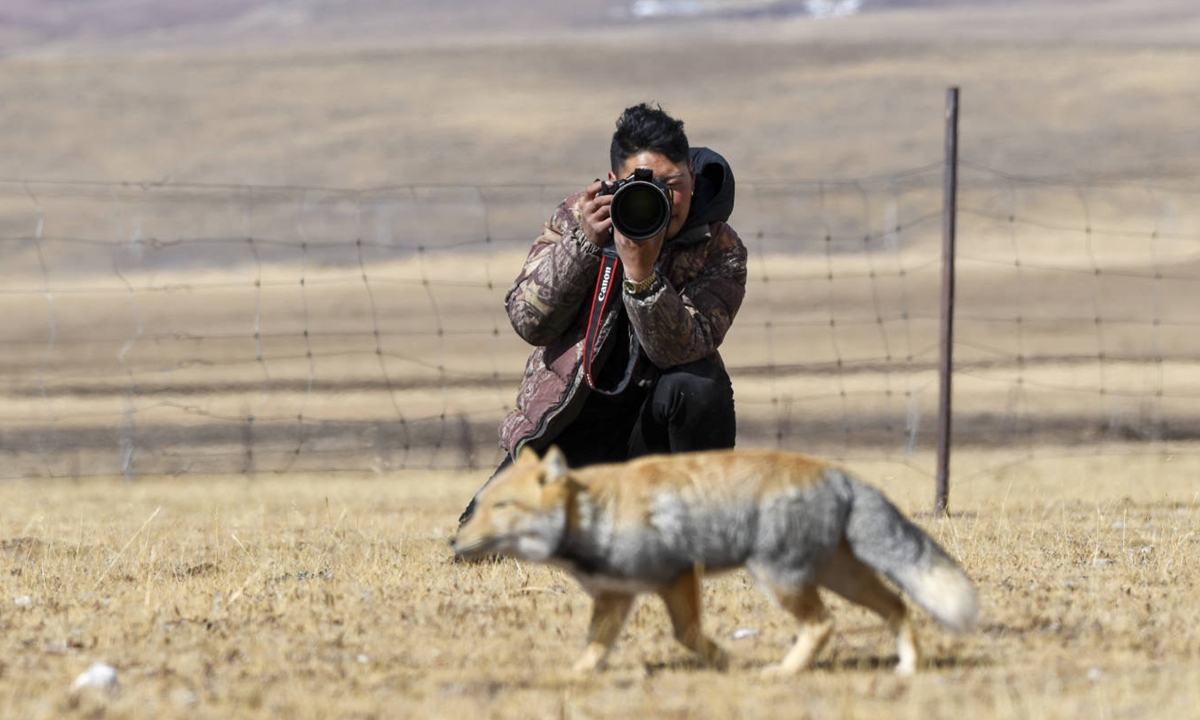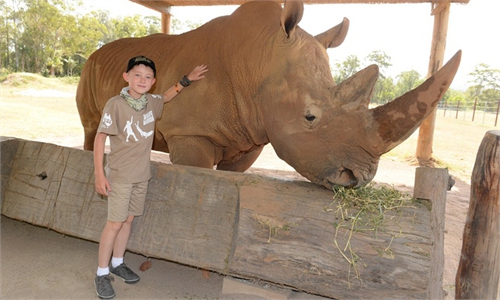ARTS / ART
Herders-turned-photographers capture the beauty of Qinghai-Tibet Plateau wildlife
Unique vision

Qupeng, Ciding and Dargye pose for a picture with their cameras in Qinghai Province. Photo: Courtesy of Wild China

Qupeng takes a photo of a fox. Photo: Courtesy of Wild China
Three Tibetan herders/photography enthusiasts from Northwest China's Qinghai Province were featured in the November cover story of the Chinese version of US magazine National Geographic, bringing these herders, who are also themselves keen about photography, into the public spotlight.Qupeng, Ciding and Dargye, live in Zadoi county, Qinghai Province. Obsessed with photographing wild animals, the three quickly fell in love with the art form. Although they once had to use old film cameras for a time, they had the advantage of living in a beautiful natural environment that provided splendid content for them to capture. In 2016, the natural scenery and wildlife captured in their works caught the attention of the founder of the public interest organization Wild China, Xi Zhinong, who is also a well-known Chinese photographer.
Xi noticed the huge potential and eye for composition that these herders possessed and realized that if they had more training and better equipment they could reach new heights in showing the world the beauty of the wild animals living on the Qinghai-Tibet Plateau.
Rare snapshots
"I have always loved cameras and used to take scenic photos with my mobile phone. One time after selling all my caterpillar fungus, I bought a camera to take better pictures," Qupeng told the Global Times, talking about his deep love for photography.
Qupeng and the other two herders' hometown is located in the region that is the source of the Yangtze, Yellow and Lancang rivers. It has a wide variety of landscapes such as mountains, valleys and forests as well as alpine meadows that are home to various wild animal species.
It is not unusual to see many rare wild animals in this region like white-lip deer, blue sheep and alpine musk deer. However, some large wild cats such as snow leopards still remain elusive for many photographers.
Xi discovered that this was not the case, however, for these local herders. They had captured many photos showing snow leopards feasting on blue sheep with their cameras. Relying on their familiarity with the region, these herders could travel anywhere they wanted, even dangerous high mountains, to capture the vivid scenes of wild animals through their lens.
But sometimes these journeys posed risks. Once when Qupeng was climbing up a mountain range to capture some photos, he suddenly found himself at the center of a huge hail storm.
"I was so scared at that time. It is more dangerous to be in a storm on the mountains than on the flat ground and since my photography equipment was electric, I left it a few hundred meters away from me just to be safe," Qupeng recalled.
But even more impressive were the moments when he was able to document the lives of some rare and adorable animals with his camera.
For instance, the three herders and Xi once spent 35 days shooting a snow leopard mother nursing her cubs outside a cave that a local herder discovered while picking caterpillar fungus.
"Through the mist, and also through the viewfinder of my camera, I could see a small snow leopard facing the mouth of the cave and sleeping comfortably on its mother, whose big tail was wrapped around it like a scarf or a quilt. The scene was very touching," Xi wrote in his diary, according to an article sent to the Global Times by Wild China.
The growth plan for herders
Qupeng said he is thankful to Xi and Wild China for establishing a training program to help herders like himself who are interested in photography improve their skills.
"They gave us a great platform to study photography."
Xi said that he believes there are more herders our there who have the capability to take brilliant photos. So with the support of the local government, Wild China launched the training program in 2016.
The three herders are the first official batch of trainees to finish the program.
In July, Wild China held a camp that saw more than 40 local herders take part. Many of them had brought with them some very advanced camera equipment.
One 7-year-old girl who took part in the event captured people's attention. She was daughter of Dargye.
The little girl has been taking photos with her father since she was 6 years old. Her father noted that she has her own advantages when it comes to getting great pictures as small animals are not scared when seeing her, which allows her to get close to them.
Through the training program, many herders have learned how to make use of more advanced equipment such as unmanned aerial vehicles to enhance their photography.
Qupeng deeply loves the Qinghai-Tibet Plateau and wild animals living there. His photos show the beauty of these plateau residents, which he hopes will arouse people's awareness to protect them and their home.




